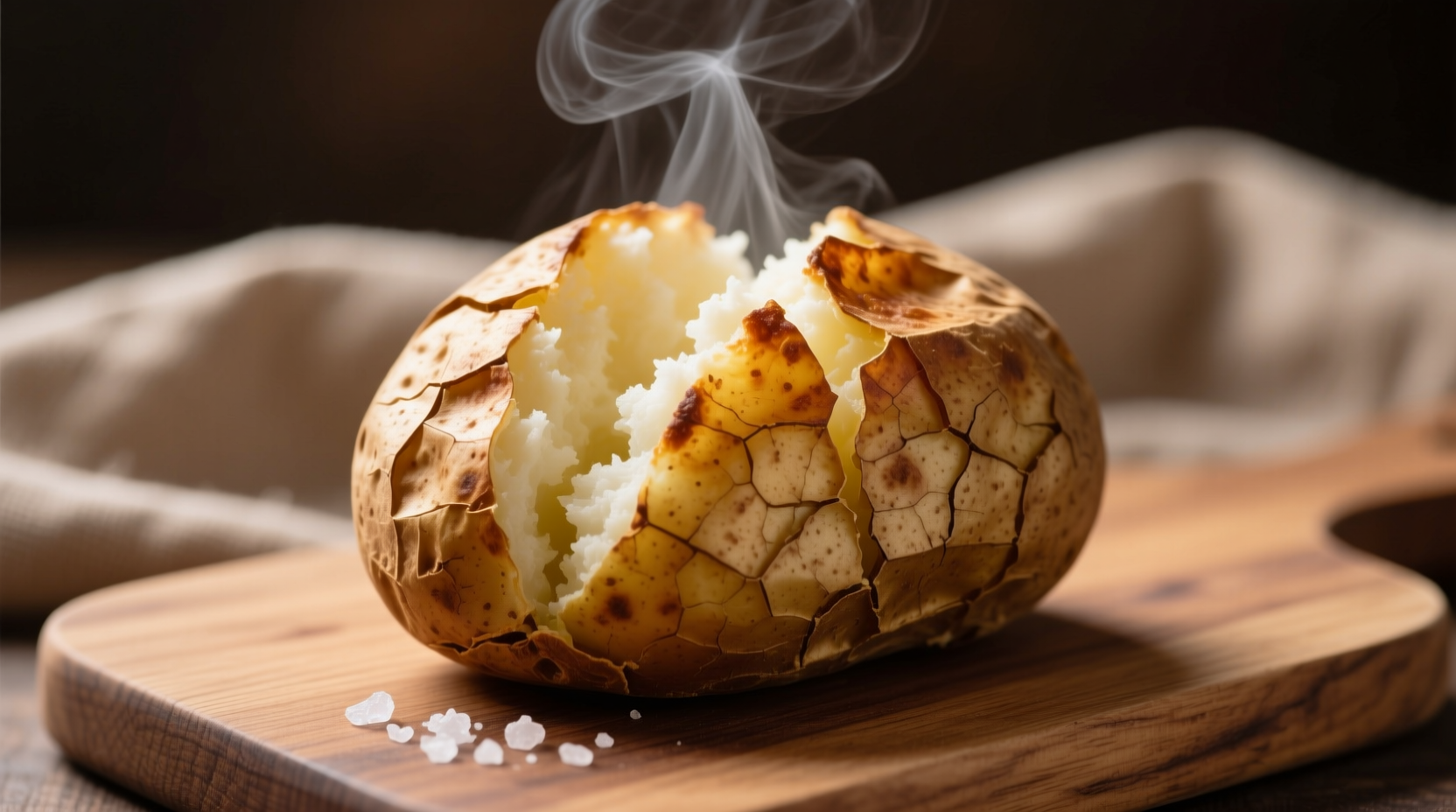Master the Art of Oven-Baked Jacket Potatoes
There's nothing quite like a perfectly cooked jacket potato – fluffy interior, crispy skin, and ready to be customized with your favorite toppings. This traditional British favorite is deceptively simple, but getting it just right requires understanding the proper technique. Whether you're cooking for one or feeding a family, this guide delivers professional results every time.
What You'll Need for Perfect Results
Before you start, gather these essential items:
- Russet or Maris Piper potatoes (ideal for baking)
- Baking tray or sheet
- Fork for piercing
- Kitchen towel
- Olive oil or melted butter (optional for crispier skin)
- Salt (optional)
Step-by-Step Preparation Process
Proper preparation makes all the difference in achieving that perfect crispy skin and fluffy interior.
1. Selecting the Right Potatoes
Choose firm, blemish-free potatoes with smooth skin. Russet potatoes are ideal for baking due to their high starch content, which creates that signature fluffy texture. For authentic British-style jacket potatoes, Maris Piper varieties work exceptionally well.
2. Cleaning and Drying
Thoroughly wash potatoes under cold running water, using a vegetable brush to remove any dirt. This step is crucial for food safety and prevents grit in your finished dish. After washing, dry potatoes completely with a kitchen towel. Moisture on the surface prevents the skin from crisping properly.
3. Proper Piercing Technique
Using a fork, pierce each potato 4-6 times around its surface. This critical food safety step allows steam to escape during cooking. According to the UK Food Standards Agency, failing to pierce potatoes can cause them to explode in the oven due to built-up steam pressure.
4. Optional Skin Enhancement
For extra-crispy skin, rub each potato with a small amount of olive oil or melted butter and sprinkle with coarse salt. This creates a deliciously crunchy exterior while helping the skin separate from the flesh.
The Perfect Baking Method
Temperature control and timing are essential for flawless results.
Oven Temperature Guidelines
Preheat your oven to 200°C (400°F). This temperature provides the ideal balance between cooking the interior thoroughly while crisping the exterior. Lower temperatures result in longer cooking times that can dry out the potato, while higher temperatures risk burning the skin before the center cooks through.
| Potato Size | Cooking Time | Internal Temperature |
|---|---|---|
| Small (150-200g) | 45-55 minutes | 99°C (210°F) |
| Medium (200-300g) | 55-65 minutes | 99°C (210°F) |
| Large (300-400g) | 65-75 minutes | 99°C (210°F) |
These cooking time guidelines from BBC Food ensure your potatoes cook evenly without drying out. Note that actual cooking times may vary slightly depending on your oven and potato variety.
Placement in the Oven
Place potatoes directly on the middle oven rack with a baking tray on the rack below to catch any drips. Avoid placing potatoes on a baking sheet, as this traps moisture and prevents the bottom from crisping properly. For even cooking, rotate potatoes halfway through the baking time.
How to Test for Doneness
Don't rely solely on timing – proper testing ensures perfect results:
- Squeeze test: Using oven mitts, gently squeeze the potato. It should give slightly but not feel mushy.
- Internal temperature: Insert a food thermometer into the center. It should read 99°C (210°F).
- Knife test: Insert a knife or skewer into the center. It should slide in with no resistance.
Undercooked potatoes will feel firm in the center, while overcooked potatoes become dry and mealy. The perfect jacket potato has steam escaping when pierced and a fluffy, fully cooked interior.

Serving Your Jacket Potato
Once your potato is perfectly cooked, follow these professional serving tips:
1. Resting Time
Remove potatoes from the oven and let them rest for 5 minutes. This allows the interior to finish cooking through residual heat and makes handling safer.
2. Proper Cutting Technique
Using a sharp knife, cut a deep slit across the top of the potato. Press the ends toward the center to open it up, creating a natural pocket for fillings. This technique, used by professional chefs, maximizes the surface area for toppings while maintaining the potato's structure.
3. Classic Topping Combinations
Traditional British jacket potatoes feature simple, high-quality toppings:
- Classic: Butter, salt, and freshly cracked black pepper
- Loaded: Grated cheddar cheese, sour cream, and chives
- Healthy: Low-fat Greek yogurt, steamed broccoli, and lemon zest
- Protein-packed: Baked beans, tuna, or chili con carne
Avoid These Common Mistakes
Even experienced cooks make these jacket potato errors:
- Skipping the piercing step: Can cause potatoes to explode in the oven
- Wrapping in foil: Creates steamed potatoes rather than baked, resulting in soggy skin
- Incorrect oven temperature: Too low = dry potatoes; too high = burnt skin
- Overfilling with wet toppings: Makes the potato soggy instead of fluffy
- Cutting too soon: Releases steam that keeps the interior fluffy
Storage and Reheating Tips
If you have leftovers (rare with this delicious dish!), store cooled potatoes in an airtight container in the refrigerator for up to 3 days. For best results when reheating:
- Oven method: Reheat at 180°C (350°F) for 15-20 minutes until heated through
- Air fryer: 160°C (320°F) for 8-10 minutes for crispy skin restoration
- Avoid microwaving: Makes skin rubbery and interior gummy
According to USDA FoodData Central, a medium baked potato (173g) provides 161 calories, 4.3g fiber, and significant amounts of potassium and vitamin C, making it a nutritious base for balanced meals.
Why This Method Works Every Time
The science behind perfect jacket potatoes involves moisture control and starch transformation. As potatoes bake, their internal moisture turns to steam, which cooks the starch granules. At 99°C (210°F), the starches fully gelatinize, creating that signature fluffy texture. The dry heat of the oven simultaneously dehydrates the skin surface, creating crispiness without frying. This precise temperature control is why oven-baking produces superior results compared to microwave methods.











 浙公网安备
33010002000092号
浙公网安备
33010002000092号 浙B2-20120091-4
浙B2-20120091-4